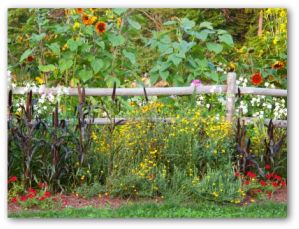June has now arrived and the temperatures in many areas have risen quickly. The sun is out and we want to enjoy the outdoors more. One thing to keep in mind when outside is the dangers that can be around us. When you are enjoying the outdoors be aware of what is in your yard and outdoor areas. There are dangers in landscaping, plants, chemicals and ground covers that you may not even think of. Many can be very harmful if eaten. Remember that cocoa mulch is very dangerous if eaten. Many varieties of yard mushrooms are poisonous. These are just a couple of items. Find a long list of poisonous plants below and the dangers from them. Don’t forget about the dangers from backyard pests, such as snakes, spiders and wasps. Remember to keep a close eye on your children and pets. Keep the poison control number on your fridge and speed dial, 1-800-222-1222. Use this toll-free, nationwide number anytime you think your child or pet had contact with something that could be poisonous, don’t hesitate, call Poison Control immediately!
If your child or pet is having seizures, is not breathing, or is unresponsive, then you should call 911 or your vets emergency number promptly. Be prepared, keep these numbers in quick access locations. Have your www.fldiscounts.provisionrx.com health savings card on hand to save immediately on any prescriptions you will need to fill, or any lab work that will need to be done. The numbers listed on the discount card will direct you to the savings and all the locations near you. You can visit my website, http://www.fldiscounts.provisionrx.com to print more cards and get all the access numbers and help you need. Remember your discount card never expires, one card covers the whole family, it can be used nationwide and there is no cost to get these savings. Have your pharmacy keep the card number on file so you will save the most each time you visit that pharmacy. 
Below is a list of the more common poisonous plants:
| PLANT | TOXIC PART | SYMPTOMS |
|---|---|---|
| HOUSE PLANTS | ||
| Hyacinth, Narcissus, Daffodil | Bulbs | Nausea, vomiting, diarrhea. May be fatal. |
| Oleander | Leaves, branches | Extremely poisonous. Affects the heart, produces severe digestive upset and has caused death. |
| Dieffenbachia (Dumb Cane), Elephant Ear | All parts | Intense burning and irritation of the mouth and tongue. Death can occur if base of the tongue swells enough to block the air passage of the throat. |
| Rosary Pea, Castor Bean | Seeds | Fatal. A single Rosary Pea seed has caused death. One or two Castor Bean seeds are near the lethal dose for adults. |
| FLOWER GARDEN PLANTS | ||
| Larkspur | Young plant, seeds | Digestive upset, nervous excitement, depression. May be fatal. |
| Monkshood | Fleshy roots | Digestive upset and nervous excitement. |
| Autumn Crocus, Star of Bethlehem | Bulbs | Vomiting and nervous excitement. |
| Lily-of-the-Valley | Leaves, flowers | Irregular heart beat and pulse, usually accompanied by digestive upset and mental confusion. |
| Iris | Underground stems | Severe-but not usually serious-digestive upset. |
| Foxglove | Leaves | Large amounts cause dangerously irregular heartbeat and pulse, usually digestive upset and mental confusion. May be fatal. |
| Bleeding Heart | Foliage, roots | May be poisonous in large amounts. Has proved fatal to cattle. |
| VEGETABLE GARDEN PLANTS | ||
| Rhubarb | Leaf blade | Fatal. Large amounts of raw or cooked leaves can cause convulsions, coma, followed rapidly by death. |
| ORNAMENTAL PLANTS | ||
| Daphne | Berries | Fatal. A few berries can kill a child. |
| Wisteria | Seeds, pods | Mild to severe digestive upset. Many children are poisoned by this plant. |
| Golden Chain | Bean-like capsules in which the seeds are suspended | Severe poisoning. Excitement, staggering, convulsions and coma. May be fatal. |
| Laurels, Rhododendrons, Azaleas | All parts | Fatal. Produces nausea and vomiting, depression, difficult breathing, prostration and coma. |
| Jasmine | Berries | Fatal. Digestive disturbance and nervous symptoms. |
| Lantana Camara (Red Sage) | Green berries | Fatal. Affects lungs, kidneys, heart and nervous system. Grows in the southern U.S. And in moderate climates. |
| Yew | Berries, foliage | Fatal. Foliage more toxic than berries. Death is usually sudden without warning symptoms. |
| TREES AND SHRUBS | ||
| Wild and cultivated cherries | Twigs, foliage | Fatal. Contains a compound that releases cyanide when eaten. Gasping, excitement and prostration are common symptoms. |
| Oaks | Foliage, acorns | Affects kidneys gradually. Symptoms appear only after several days or weeks. Takes a large amount for poisoning. |
| Elderberry | All parts, especially roots | Children have been poisoned by using pieces of the pithy stems for blowguns. Nausea and digestive upset. |
| Black Locust | Bark, sprouts, foliage | Children have suffered nausea, weakness and depression after chewing the bark and seeds. |
| PLANTS IN WOODED AREAS | ||
| Jack-in-the-Pulpit | All parts, especially roots | Like Dumb Cane, contains small needle-like crystals of calcium oxalate that cause intense irritation and burning of the mouth and tongue. |
| Moonseed | Berries | Blue, purple color, resembling wild grapes. May be fatal. |
| Mayapple | Apple, foliage, roots | Contains at least 16 active toxic principles, primarily in the roots. Children often eat the apple with no ill effects, but several apples may cause diarrhea. |
| Mistletoe | Berries | Fatal. Both children and adults have died from eating the berries. |
| PLANTS IN SWAMP OR MOIST AREAS | ||
| Water Hemlock | All parts | Fatal. Violent and painful convulsions. A number of people have died from hemlock. |
| PLANTS IN FIELDS | ||
| Buttercups | All parts | Irritant juices may severely injure the digestive system. |
| Nightshade | All parts, especially the unripened berry | Fatal. Intense digestive disturbance and nervous symptoms. |
| Poison Hemlock | All parts | Fatal. Resembles a large wild carrot. |
| Jimson Weed (Thorn Apple) | All parts | Abnormal thirst, distorted sight, delirium, incoherence and coma. Common cause of poisoning. Has proved fatal. |
Materials in list provided by the TX State Department of Health and the National Safety Council. Visit http://www.fldiscounts.provisionrx.com
 Treat unknown plants with respect, and teach your children to do the same. Also, train your pets to steer clear of the areas that have any of these dangers. There are inexpensive ways to protect your children and your pets from contact with any outdoor danger areas. Fencing is a great idea and you can design one that will offer safety and have the look you desire for your outdoor areas with little or no cost.
Treat unknown plants with respect, and teach your children to do the same. Also, train your pets to steer clear of the areas that have any of these dangers. There are inexpensive ways to protect your children and your pets from contact with any outdoor danger areas. Fencing is a great idea and you can design one that will offer safety and have the look you desire for your outdoor areas with little or no cost.
Think about old items you have in the garage or house, like old shovels, racquets, mallets, brooms, etc. use these pieces to form the vertical slats of your backyard fence. Nail or screw each piece to a couple of horizontal boards to create an original artistic fence. Another great idea is to use PVC pipes for post. Hammer the PVC into the ground about 1 foot deep and evenly spaced. The hollowed out PVC tubes hammer nicely into the ground and you can fill them with dirt for extra support. Make each post decorative by adding post caps to the top of each of them.
When designing the fencing sides, try this crafty idea, make a fence of landscape fabric or floating row covers (used for insect barriers). Each of these can easily be fastened to the posts you sunk into the ground. This creates a lovely, safe barrier (you can also lay it over the top of your plants for protection). Chicken wire can also be used but many critters can climb chicken wire fences. If you want to use it, I have a tip that may help keep out the climbing critters. Do not attach the top 12 inches of the fencing to any post. Only attach the lower section of fencing. Let the top 1 foot of fencing flop over so when the animal tries to climb over, the top of the fencing crumbles down and outward. As for those burrowing critters, you can keep them out by digging a trough, about 6 inches deep and 12 inches wide around the perimeter of the area. Place your fencing posts in the ground on the inside (the garden side) of the trench. Now line the trough with chicken wire and extend the chicken wire up the posts. Attach chicken wire to fence posts as you go up. If you have a great backyard safety tip or project, please let us know about it.
These safety reminders are not meant to keep you indoors, but to remind you to be safe and keep on eye on those who don’t know any better. Now get outside, enjoy the fresh air, clear your head, get some sunshine and much needed natural Vitamin C and D. Don’t forget to use your SPF 30 lotion and apply it often. Enjoy the lovely weather and the beauty that surrounds us outdoors. Remember to check back often for more helpful tips and enjoyable articles. http://www.medicaldiscounts.wordpress.com





















